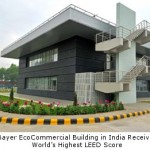
Natural gas is a mixture of hydrocarbons, mainly methane (CH4), and is produced either from gas wells or in conjunction with crude oil production. Due to its low energy density for use as a vehicular fuel, it is compressed to a pressure of 200-250 bars to facilitate storage in cylinders mounted in vehicles, and so it is called Compressed Natural Gas (CNG).
Liquefied Petroleum Gas (LPG) is a by-product of natural gas processing or a product that comes from crude oil refining and is composed primarily of propane and butane with smaller amounts of propylene and butylene.
The introduction of CNG vehicles in Delhi began gradually from the year 1999. By 2003, plying of all diesel buses meant for local public transport and non-CNG two-stroke three-wheelers in Delhi stopped completely. As on date (30.06.2010), there are 196 CNG stations and 20 LPG dispensing stations in Delhi. The Supreme Court of India vide its order M. C. Mehta vs. UOI dated 26th July 1998, directed for the conversion of all public vehicles – which includes diesel-driven buses, taxis (diesel & petrol) and petrol-driven three-wheelers – in Delhi to CNG. Later, the Supreme Court of India via its order dated May 9, 2002, ordered to the preparation of a scheme for compulsory switch over to CNG/LPG as automotive fuel in the cities which are equally or more polluted than Delhi. The directives of the court are as follows:
“Union of India will give a scheme with regard to compulsory switch-over of all the two-wheelers, three-wheelers and motor vehicles to LPG/CNG in cities other than Delhi which are equally or more polluted.”
This is how introduction of CNG/LPG, gaseous fuels, for public transport/private vehicles in NCT of Delhi took place which is followed by other metropolitan cities. The government allots fund for this transformation and cities have accrued benefits.
CNG has been introduced in 61 cities including Vijaywada, Hyderabad, Delhi, Mumbai, Navi Mumbai, Thane, Pune-Pimpri-Chinchwad, Ankleshwar, Vadodra, Surat, Kanpur, Bareilly, Agra, Lucknow, Faridabad, Noida, etc. The total number of CNG vehicles in the country is over 3.54 Lakh, as per the industry estimates.
LPG has been introduced in more than 153 cities and towns such as Varanasi, Bangalore, partially in Delhi, etc., at 498 dispensing stations as on 31.12.2009. However, there is no subsidy on auto LPG. (Source: MoP&NG)
Besides this, the Government has approved use of LPG in private vehicles, and such vehicles are required to comply with the emission standards as notified vide-GSR 284 (E) dated 24.4.2001.
The Auto Fuel Policy Report contains road-map for controlling vehicular pollution all over the country upto 2010. The said road-map was approved by the Central Government during 2003. Petroleum and Natural Gas Regulatory Board, New Delhi is looking after National Gaseous Fuel Programme across the country.
Ambient air quality in Delhi is being monitored by the Central Pollution Control Board (CPCB) and the National Environmental Engineering Research Institute (NEERI) at 17 stations. The status of ambient air in Delhi pre-, during and post-CNG scenario shows improvement. The levels of air pollution in Delhi may be assessed in terms of the monitoring results for key pollutants in ambient air like, Sulphur Dioxide (SO2), Nitrogen Dioxide (NO2), Carbon Monoxide (CO) and fine Particulate Matter (PM10). The time series data for ambient air quality (annual average) in Delhi is as follows:

The levels of NOx at all the monitoring locations were declining till 2001 and afterwards there has been increment in values of NOx at all the locations. In residential areas, the value of NOx in the ambient air has increased by 40% during 2003 (NOx – 38 µg/m3) as compared to 1999 (27 µg/m3), while at industrial locations, the values have increased marginally by 2%. At traffic intersections, there has been a considerable increase in values of NOx during 2003 (94 µg/m3) as compared to 1999 (60 µg/m3). In residential and industrial locations, the levels of NOx are still within the prescribed standards, but at traffic intersections, the values have exceeded the prescribed limits. In residential and industrial areas, the values are below 40 µg/m3, while at traffic intersections, it reached a value of 78 µg/m3.
The ambient air quality trends in Delhi (Traffic Intersection, ITO) during pre (1999) and post (2009) CNG implementation period reveals the following:
SO2 – Reduction in SO2 levels from 22 µg/m3 to 7µg/m3 during post-CNG implementation period (2009).
PM10 – There has been a mixed trend in the levels of PM10 from 216 µg/m3 during 1999 to 213 µg/m3 during 2009.
NOx – The levels of NOx have increased slightly from 60 µg/m3 during 1999 to 78 µg/m3 during 2009.
CO – There has been significant reduction in the levels of CO from 4241 µg/m3 in 1999 to 2542 µg/m3 in 2009.
Benzene – Reduction in benzene levels during post-CNG period.












